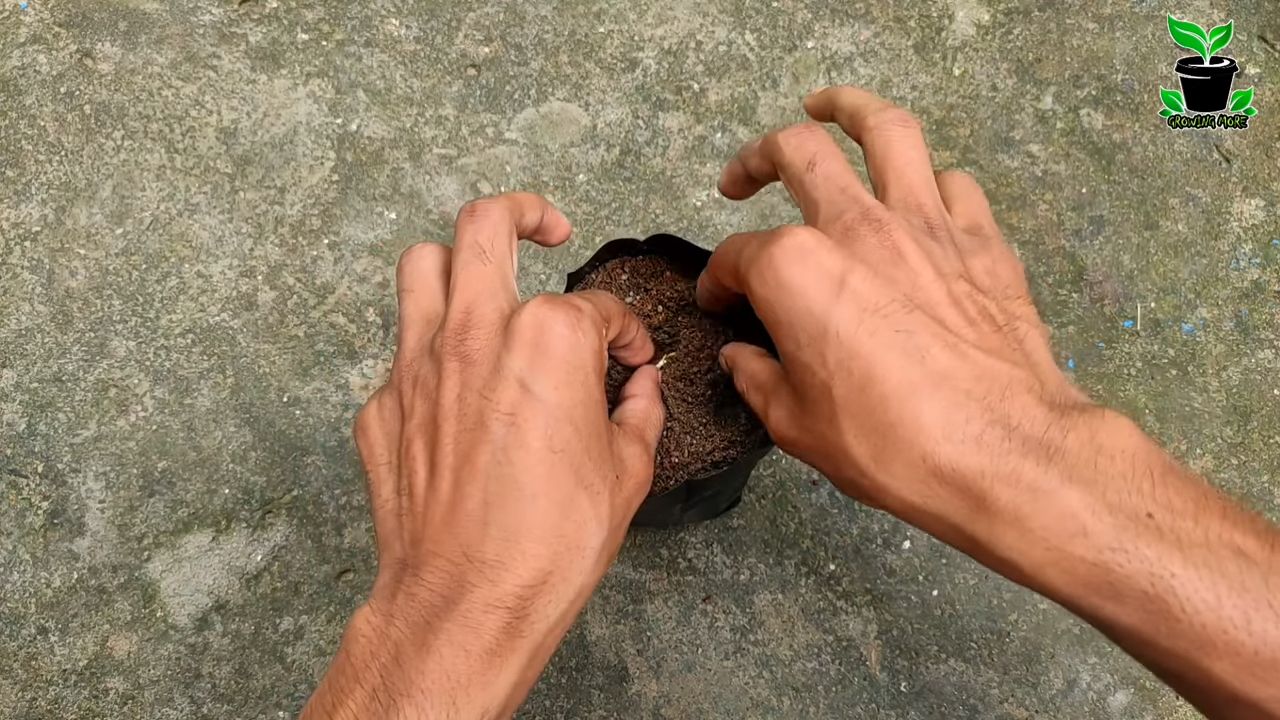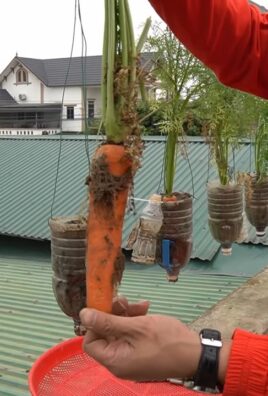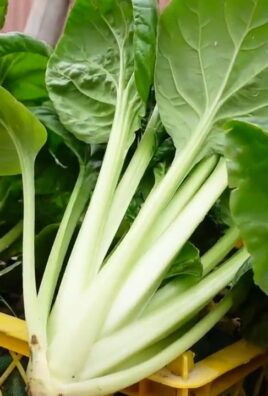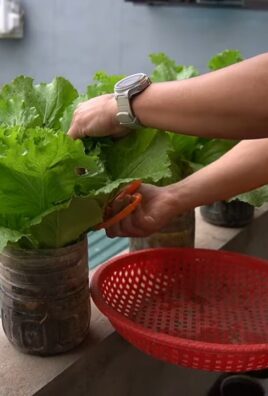Grow Peaches at Home? Absolutely! Imagine biting into a juicy, sun-ripened peach, bursting with flavor, knowing you nurtured it from blossom to fruit, right in your own backyard. It’s a dream many gardeners share, and I’m here to tell you it’s more achievable than you might think!
Peaches have a rich history, dating back thousands of years to China, where they were symbols of immortality and longevity. From ancient emperors to modern-day families, the allure of the peach has endured. While traditionally grown in orchards, the desire to cultivate these delectable fruits in smaller spaces has led to innovative techniques and DIY solutions.
But why bother with the effort? Well, store-bought peaches often lack the intense flavor and sweetness of homegrown varieties. Plus, you have complete control over the growing process, ensuring your peaches are free from unwanted chemicals. This DIY guide will equip you with the knowledge and simple tricks to successfully grow peaches at home, even if you have limited space or gardening experience. We’ll cover everything from choosing the right variety and planting techniques to pest control and harvesting, ensuring you enjoy a bountiful harvest of delicious, homegrown peaches year after year. Get ready to roll up your sleeves and embark on this rewarding gardening adventure!

Growing Peaches at Home: Your DIY Guide for a Bountiful Harvest
Hey garden friends! Have you ever imagined picking juicy, sun-ripened peaches directly from your own garden? Sounds dreamy, right? I can tell you, it’s absolutely doable! Growing peaches might seem a bit intimidating at first, but with the right preparation and care, you can soon be enjoying your own delicious peaches. In this article, I’ll show you step by step how to successfully implement the “peach tree in your own garden” project. Let’s get started!
The Basics: What You Need to Get Started
Before we dive into the details, here is a list of the things you’ll need to start:
- Peach tree sapling: Choose a variety that is suitable for your climate. It’s best to get information from a local nursery.
- Garden tools: Spade, shovel, pruning shears, possibly a hoe.
- Soil improvers: Compost, well-rotted manure, or other organic materials.
- Stake and tree tie: to support the young tree.
- Mulch: Wood chips, straw, or similar materials to retain moisture in the soil and suppress weeds.
- Fertilizer: A balanced fertilizer for fruit trees.
- Protective measures: Depending on the region, possibly protection against frost, pests, or birds.
Step-by-Step Guide: Your Peach Tree Project
1. Choosing the Right Variety
Choosing the right peach variety is crucial for success. Not every variety thrives in every climate. Pay attention to the following points:
- Climate zone: Find out which climate zone you are in and choose a variety that is suitable for it. Local nurseries are a goldmine of information here.
- Ripening time: Peaches ripen at different times of the year. If you plant different varieties with different ripening times, you can extend your harvest season.
- Resistance: Some varieties are more resistant to diseases and pests than others. This can save you a lot of work and trouble.
- Taste: Of course, taste also plays a role! If possible, try different varieties before you decide.
2. The Perfect Location
Peach trees love the sun! They need at least 6-8 hours of direct sunlight per day to grow well and bear fruit. Also, pay attention to the following points:
- Good soil: The soil should be well-draining to prevent waterlogging. Peach trees like slightly acidic soil (pH between 6.0 and 6.5).
- Wind protection: A location protected from the wind is ideal, as strong wind can damage the blossoms and cause the fruit to drop.
- Sufficient space: Peach trees can grow quite large. Plan enough space for the tree to develop freely. Pay attention to the distance to other trees, buildings, and fences.
3. Planting
The best time for planting is in the spring or fall when the ground is not frozen.
- Prepare the planting hole: Dig a hole that is twice as wide and deep as the sapling’s root ball.
- Improve the soil: Mix the excavated soil with compost or well-rotted manure to improve the soil.
- Insert the sapling: Carefully place the sapling in the hole. The top of the root ball should be level with the surrounding soil.
- Fill the hole: Fill the hole with the prepared soil and press it down lightly.
- Water in: Water the tree thoroughly.
- Set a stake: Place a stake next to the tree and tie it firmly with a tree tie to support it. Make sure the tree tie is not too tight, so the tree can still grow.
- Mulch: Apply a layer of mulch around the tree to retain moisture in the soil and suppress weeds. Leave a small gap to the trunk to prevent rot.
4. Care: Watering, Fertilizing, Pruning
Proper care is crucial for the health and yield of your peach tree.
Watering
- Water regularly: It’s important to water the tree regularly, especially in the first few years and during dry periods. Make sure the soil is moist but not wet.
- Water deeply: Water deeply so that the water reaches the roots.
Fertilizing
- Fertilize in the spring: Fertilize the tree in the spring with a balanced fertilizer for fruit trees. Follow the instructions on the packaging.
- Organic fertilizers: Alternatively, you can also use organic fertilizers like compost or horn shavings.
Pruning
Pruning is an important part of caring for peach trees. It promotes growth, fruit production, and the health of the tree.
- Winter pruning: The best time for pruning is in late winter or early spring, before the buds sprout.
- Goal of pruning: The goal of pruning is to create an open, vase-shaped crown that is well-ventilated and receives sunlight.
- Remove dead and diseased wood: First, remove all dead, diseased, or damaged branches.
- Thin out the crown: Thin out the crown by removing crossing, inward-growing, or overly dense branches.
- Promote fruiting wood: Peaches bear fruit on one-year-old wood. So, promote the growth of new wood by shortening older branches.
- End of the year: Remove water sprouts (shoots growing vertically upwards) and root suckers.
5. Protection from Pests and Diseases
Peach trees are susceptible to various pests and diseases. It’s important to check the tree regularly and take action if necessary.
- Diseases: Peach leaf curl, brown rot, shot hole disease.
- Pests: Aphids, peach twig borer, plum curculio.
Preventive Measures
- Healthy trees: Healthy trees are more resistant to pests and diseases. So, ensure good care.
- Hygiene: Remove fallen leaves and fruit to prevent the spread of diseases.
- Promote beneficial insects: Promote beneficial insects like ladybugs, which eat aphids.
Control
- Biological agents: Use biological agents to control pests and diseases whenever possible.
- Chemical agents: Chemical agents should only be used as a last resort. Follow the instructions on the packaging.
6. The Harvest
The harvest time depends on the variety and the climate. Generally, peaches ripen in the summer.
Storage: Ripe peaches have a limited shelf life. Store them in the refrigerator or process them into jam, compote, or cakes.
Recognizing ripeness: Ripe peaches have an intense color, yield to gentle pressure, and are easily picked from the tree.
Pick carefully: Pick the peaches carefully to avoid damaging them.

Conclusion
So, there you have it! Growing your own peaches at home isn’t just a whimsical dream; it’s an achievable reality with a little know-how and dedication. We’ve walked you through the essential steps, from selecting the right variety for your climate to nurturing your tree through its various stages of growth. But why should you embark on this fruity adventure?
The answer is multifaceted. Firstly, the taste of a homegrown peach, ripened to perfection on the branch, is simply unparalleled. Forget the bland, often mealy peaches you find in supermarkets. These are bursting with flavor, a testament to the care and attention you’ve invested. Secondly, you have complete control over the growing process. No harmful pesticides or chemicals need to touch your precious fruit, ensuring a healthy and delicious harvest for you and your family. Finally, there’s the sheer satisfaction of nurturing a tree from a sapling to a fruit-bearing marvel. It’s a rewarding experience that connects you to nature and provides a tangible sense of accomplishment.
This DIY trick for growing peaches at home is a must-try because it empowers you to enjoy fresh, organic fruit without relying on commercial sources. Imagine biting into a juicy peach, knowing that you cultivated it from the ground up. It’s a feeling that’s hard to beat.
But don’t stop there! Experiment with different peach varieties to find your favorites. Consider espaliering your tree against a wall to save space and create a beautiful focal point in your garden. You could even try grafting different varieties onto a single tree for a diverse harvest. The possibilities are endless!
We encourage you to take the plunge and try growing peaches at home. It may seem daunting at first, but with the information provided, you’re well-equipped to succeed. Don’t be afraid to make mistakes – they’re all part of the learning process. And most importantly, have fun!
Once you’ve harvested your first crop of homegrown peaches, we’d love to hear about your experience. Share your tips, tricks, and triumphs in the comments below. Let’s build a community of peach-growing enthusiasts and inspire others to embark on this delicious journey. Your insights could be invaluable to someone just starting out. So, get planting, get growing, and get ready to enjoy the sweet taste of success!
Frequently Asked Questions (FAQ)
What is the best time of year to plant a peach tree?
The ideal time to plant a peach tree is in the early spring or late fall, when the tree is dormant. This allows the roots to establish themselves before the stresses of summer heat or winter cold set in. If you live in an area with mild winters, fall planting is often preferred, as it gives the tree a longer period to develop its root system before the growing season begins. In colder climates, spring planting is generally recommended to avoid the risk of winter damage.
How much sunlight does a peach tree need?
Peach trees require at least 6-8 hours of direct sunlight per day to thrive and produce a good crop of fruit. Choose a planting location that receives full sun throughout the day, avoiding areas shaded by buildings or other trees. Insufficient sunlight can lead to poor fruit production, weak growth, and increased susceptibility to diseases.
What kind of soil is best for peach trees?
Peach trees prefer well-drained, loamy soil with a slightly acidic pH (between 6.0 and 6.5). Heavy clay soils can be problematic, as they retain too much water and can lead to root rot. If you have clay soil, amend it with organic matter such as compost or well-rotted manure to improve drainage and aeration. Sandy soils, on the other hand, may drain too quickly and require more frequent watering.
How often should I water my peach tree?
Watering frequency depends on several factors, including the age of the tree, the climate, and the type of soil. Young trees require more frequent watering than established trees. During the first year, water deeply and regularly, especially during dry periods. Established trees generally need watering every 1-2 weeks, or more often during hot, dry weather. The best way to determine if your tree needs water is to check the soil moisture. If the top inch or two of soil is dry, it’s time to water. Avoid overwatering, as this can lead to root rot.
How do I prune a peach tree?
Pruning is essential for maintaining the health and productivity of a peach tree. The best time to prune is in late winter or early spring, before the tree begins to grow. Peach trees bear fruit on one-year-old wood, so pruning should focus on encouraging new growth. Remove any dead, damaged, or diseased branches, as well as any branches that are crossing or rubbing against each other. Thin out the canopy to allow for good air circulation and sunlight penetration. A vase-shaped pruning style is often recommended for peach trees, as it allows for maximum sunlight exposure to the fruit.
What are some common pests and diseases that affect peach trees?
Peach trees are susceptible to a variety of pests and diseases, including peach leaf curl, brown rot, plum curculio, and aphids. Regular monitoring of your tree is essential for early detection and treatment. Peach leaf curl is a fungal disease that causes leaves to become distorted and puckered. Brown rot is another fungal disease that can cause fruit to rot on the tree. Plum curculio is an insect that lays its eggs in the fruit, causing it to become damaged and deformed. Aphids are small insects that suck sap from the leaves, causing them to become yellow and stunted. There are various organic and chemical control methods available for these pests and diseases. Consult with your local nursery or extension office for recommendations specific to your area.
How long does it take for a peach tree to bear fruit?
Most peach trees will begin to bear fruit within 3-4 years of planting. However, the exact time frame can vary depending on the variety of peach tree, the growing conditions, and the care provided. Grafted trees typically bear fruit sooner than trees grown from seed. Proper pruning, fertilization, and watering can also help to accelerate fruit production.
Do I need to pollinate my peach tree?
Most peach varieties are self-pollinating, meaning they don’t require another tree for pollination. However, some varieties may benefit from cross-pollination with another peach tree. If you’re unsure whether your peach tree is self-pollinating, consult with your local nursery or extension office. Planting two different varieties of peach trees can often improve fruit set and yield.
How do I know when my peaches are ripe?
Peaches are ripe when they are slightly soft to the touch and have a fragrant aroma. The skin color will also change from green to yellow or red, depending on the variety. Gently twist the peach from the branch; if it comes off easily, it’s ripe. Avoid squeezing the peaches too hard, as this can bruise them. Ripe peaches should be eaten or processed immediately, as they don’t store well.
Can I grow a peach tree in a container?
Yes, you can grow a peach tree in a container, but you’ll need to choose a dwarf or semi-dwarf variety that is suitable for container growing. Use a large container (at least 20 gallons) with good drainage. Fill the container with a well-draining potting mix. Container-grown peach trees require more frequent watering and fertilization than trees grown in the ground. They also need to be protected from extreme temperatures.




Leave a Comment